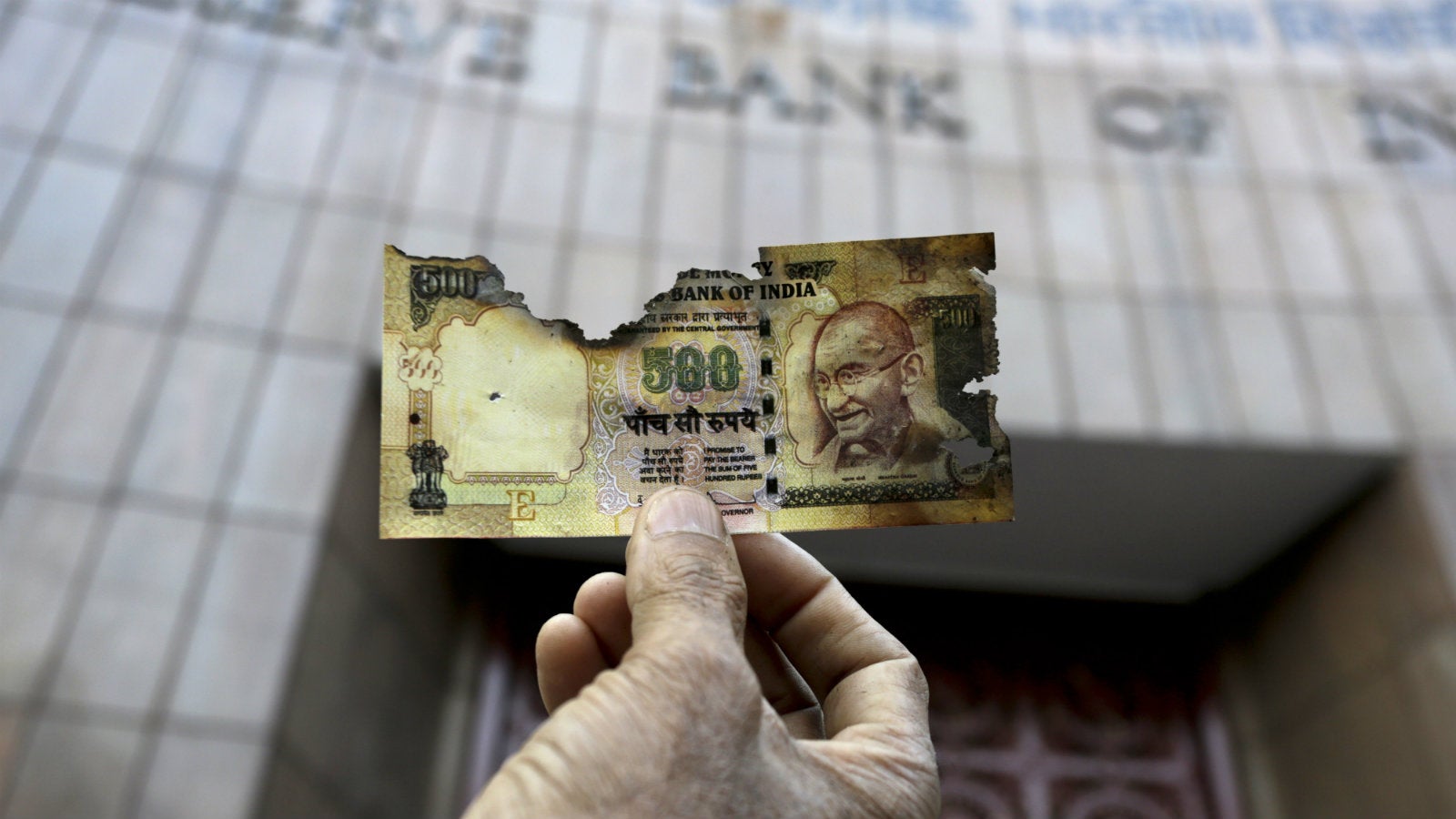India’s central bank doesn’t have many good things to say about the economy post-demonetisation
After months of speculation, the Reserve Bank of India (RBI) has finally clarified just how many demonetised Rs500 and Rs1,000 notes have been collected by banks.


After months of speculation, the Reserve Bank of India (RBI) has finally clarified just how many demonetised Rs500 and Rs1,000 notes have been collected by banks.
The Narendra Modi-led government’s decision to declare these two high-value denominations invalid in November 2016 removed 86% of India’s currency in circulation by value, sparking a severe cash-crunch in the economy. Following this, both the government and the RBI came under fire, with the former being questioned over the rationale behind the move and the latter for the delay in counting the deposited old notes.
In its annual report (pdf) for 2016-17, released on Aug. 30, India’s central bank finally revealed that about 99% of the notes that had ceased to be legal tender following demonetisation have been collected by the banks.
Here’s a list of the 10 key takeaways from the report:
1) 99% of the demonetised notes collected—In November 2016, Rs15.44 lakh crore worth of currency was scrapped. Out of this, Rs15.28 lakh crore, or about 99% of these notes, has been deposited with the banks, the report said. However, it added that 89 million units of Rs1,000 notes, worth Rs8,900 crore, had not been returned to the banking system.
2) More counterfeit notes weeded out—There was an increase of 20.4% in the detection of fake notes by banks in 2016-17, as compared to the year before that. The detection of counterfeit notes in the Rs500 and Rs1,000 denominations saw an uptick probably as a result of demonetisation. About 762,072 pieces of counterfeit notes were detected in all through the financial year.
3) Suspicious banking transactions increased—As more people rushed to deposit the scrapped notes to beat the December-end deadline, there was a significant increase in suspicious transactions recorded by banks, the report said. Lenders and financial intermediaries reported 473,003 such transactions in 2016-17, compared to 106,273 in the previous year.
4) Currency printing cost more than doubled—As new Rs500 and Rs2,000 notes were introduced, the central bank had to foot a higher bill for currency printing—it spent Rs7,965 crore in 2016-17 as compared to Rs3,420 crore in 2015-16.
5) RBI’s income declined and expenditure rose—In the last financial year, the RBI’s income declined by 23.56%, while expenditure increased by a massive 107.84%. So its balance sheet came under pressure and the surplus declined by 53% to Rs30,659 crore as compared to Rs65,876 crore the year before.
6) Increased bad loans at public sector banks—The report raised concerns over the increase in bad loans, especially at public sector banks. At the end of March this year, 12.1% of the total advances fell under the stressed assets category. So out of every Rs100 lent out by the banks, they were unlikely to recover Rs12. This has put pressure on banks’ capital position, restricting their ability to lend.
7) Credit growth at end-March lowest since 1994-95—With banks focusing on cleaning up bad loans and with investments remaining tepid, loan growth hasn’t been robust. The report pointed out that the loan growth in the non-food segment hit 5.8% at the end of March 2017, the lowest since 1994-95.
8) Farm-loan waivers to put pressure on state-government finances—Several state governments, including those of Uttar Pradesh, Maharashtra, Punjab, and Karnataka, have given in to farmers’ demands and waived farm loans. The RBI believes this will “pose a major fiscal risk over the medium term” for these states. It also believes that farm-loan waivers spoil the credit culture by disincentivising borrowers from repaying.
9) Investments in slow lane—Investments have remained depressed even though lending rates have come down, the RBI said, adding that capacity utilisation and slow industry growth are still a concern. However, going ahead, the central bank does expect investments to pick up.
10) Consumption demand to remain robust—Even though investments have been under pressure, the RBI expects economic growth to pick up in the current financial year, with the expectation of a normal south-west monsoon, the possible implementation of the 7th pay commission, and more currency coming back into the system likely to push up consumption demand.